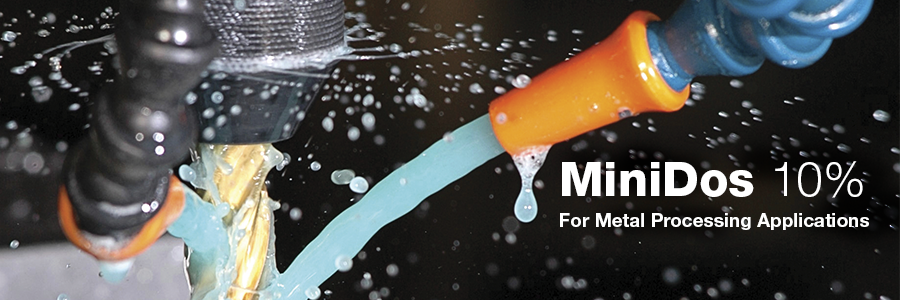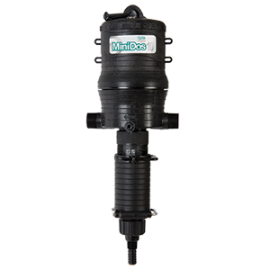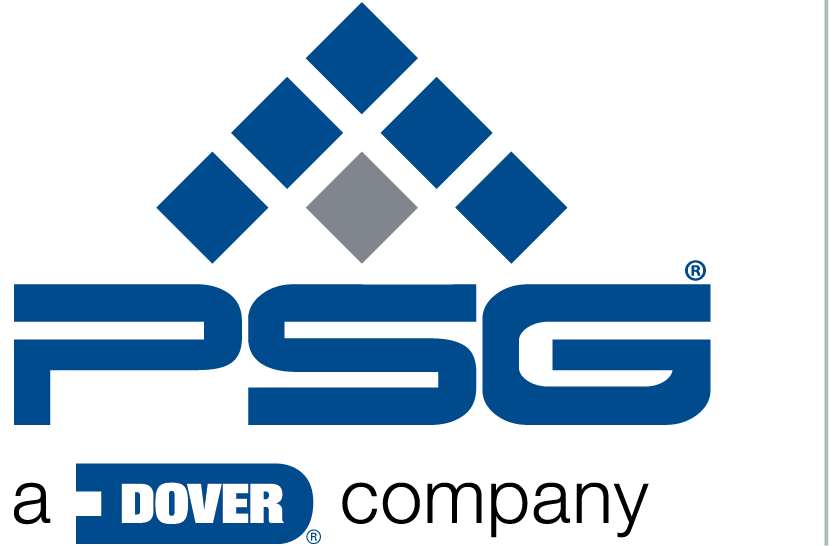Precisely Inject Coolant During Metal Processing

The MiniDos 10% Injector For Metal Processing Applications (Part 2)
This is Part 2 of the MiniDos 10% Injector For Metal Processing Applications article. To read Part 1 of the article, click here.
Cool Your Jets
Coolants are used to prevent excessive heat from building up during metal processing. Any excessive heat buildup can compromise both the metal-working equipment and the final product.
2 Criteria for Coolants
- They must be introduced to the process via user-selectable, highly precise and repeatable injection rates.
- Their delicate chemistries must be kept clear of outside contaminants.
“If you get too low in concentration, you don’t have enough product to do what you need to do and you can get odors, corrosion and poor tool life,” said Allen Banks, a Service Engineer with Master Chemical Corporation. “With too high a concentration there are sticky residues, poor tool life and high usage of product. You have that sweet spot that you need to stay in, plus the other struggle is to minimize contamination that comes from outside sources.”
Most common forms of outside contaminants
- Hard-water mineral deposits
- Dust
- Dirt
- Small metal fines
- Bacteria from the air and surrounding environment
- Cutting oils that are used during the metal-working process
Bacteria and oils can be especially harmful if they enter the coolant supply since the coolants are biodegradable and will be eaten away by these types of contaminants.
Reaching the Proper Coolant Concentration
While preventing coolant contamination is an obvious front-of-mind concern for the manufacturer, the most important task during metal processing is ensuring that the proper concentration of coolant is injected each and every time. Depending on the size of the operation and the volume of coolant required, there have been many attempts to find the best way to identify and maintain the proper coolant concentration.
Why Hand Mixing Doesn’t Work
One of the most basic attempts is simply mixing the coolant concentrate with water in a bucket, though it does have its shortcomings.
“That doesn’t work as well because the concentrated oil in the coolant doesn’t always mix well with water,” said Banks.
Some forms of coolants also feature a defoamer. This can be problematic, as well, because as the mixing process is taking place the defoamer can separate and get “lost” in the formulation, meaning that the coolant will be susceptible to excessive foaming, which will compromise its effectiveness.
Alternative Injecting Technologies: Peristaltic and Venturi
When the correct formulation and concentration are achieved, the next stage during metal processing is actually injecting the coolant. This is done through the use of pumps, though much like finding the best way to mix the coolant, there are numerous types of pumps that can be used to complete the task.
One common pump technology that is used is the peristaltic (hose) pump, but these require the use of a flowmeter to track flow rates.
Another technology are Venturi-style pumps, but the shortcoming with these types of pumps is the fact that the consistency of flow rates they produce is depends on the pumping pressure staying specific; any change in pressure will change the flow rate and adversely affect the production process.
“These technologies can be more touchy with flow and pressure,” said Banks. “As you slow down the injection rate the concentration gets weaker, and as you speed up the concentration gets higher. It’s like how you see water pressure change when you’re in the shower and someone flushes the toilet.”
The Dose With The Most
After experimenting with various types of mixing techniques and injection technologies, Banks has found the ultimate solution, one that is guaranteed to meet strict volume and flow-rate requirements while reducing the chance for outside contamination: the MiniDos 10% Proportional Injector from Hydro Systems, Cincinnati, OH, a Dover company.
MiniDos 10% Injector
How It Works
The MiniDos is installed directly in the water supply and uses water pressure as the power source, so no electricity is required for its operation, which can represent a significant cost savings. As the water pressure drives the injector, it pulls the required percentage of coolant concentrate directly from the storage container. The coolant concentration is mixed with the appropriate amount of water and then injected into the distribution line, much like a syringe is used to inject medicine into a patient. This method of operation allows the amount of coolant concentrate to be directly proportional to the volume of water entering the injector, regardless of any variance in flow rate or water pressure.
The MiniDos 10% has an injection range of 2% to 10% concentrated coolants with water-to-coolant ratios ranging from 10:1 to 50:1. It can produce flow rates from 0.07 to 10 gpm (16-2,200 L/hr) and work in operating pressures from 6 to 65 psi (0.5-4.5 bar). The MiniDos 10% can operate with a suction hose up to 50 feet long (15 meters), a discharge hose in excess of 100 feet (30 m) and height between the storage vessel and the pump of up to 13 feet (4 m). The MiniDos also utilizes a patented internal mixing chamber that limits coolant contact with the motor. It is the best choice for metal processing applications.
The Proven Best Option
“The MiniDos is the best option, especially for large central systems where we don’t want any variables to change, where we want all of the flow and pressure numbers to stay constant,” said Banks. “Another great advantage is that it goes directly into the water line and you use water pressure to deliver mixed fluid to each machine so no additional pumps are required.”
To prove the capabilities of the MiniDos 10% injectors, Hydro Systems performed validation testing on five units at flow rates from 1 to 12 gpm (227-2,700 L/hr) and at five dilution ratios from 10:1 to 50:1. The units went through as many as three million injection cycles and pumped 750,000 gallons of water, and all of them equaled or exceeded the operational specifications for both a brand-new unit and one that had been operating in the field for upwards of three million cycles.
MiniDos for Metal Processing: Robust, Economical, Delicate
Metal processing may require a lot of brute force, but when $20,000 to $30,000 of product can be lost if a cutting blade fails, you get an idea how important “precise” and “delicate” dilution and injection of coolant can be to the process. The Hydro Systems MiniDos 10% Proportional Injector can help metal processors achieve the results that are demanded of them in terms of operational effectiveness, reliability and cost-consciousness.
“One of the great things at Master Chemical Corporation and working with Hydro Systems is that together we provide a solution that makes the manufacturing process more stable, reduces the number of variables, reduces the attention required, and keeps everything running smoothly,” said Banks. “That’s why we’ve worked closely with Hydro Systems to get the MiniDos to as many customers as possible. The MiniDos system is very robust and economical. The customers are willing to buy them because of the favorable price and after they see how well it works, if they need a second mixer, they’ll go back to Hydro Systems.”
Learn more about the MiniDos 10%.

Customer Service and Technical Support
Call 1-800-543-7184 Monday-Friday 8am - 5pm EST












